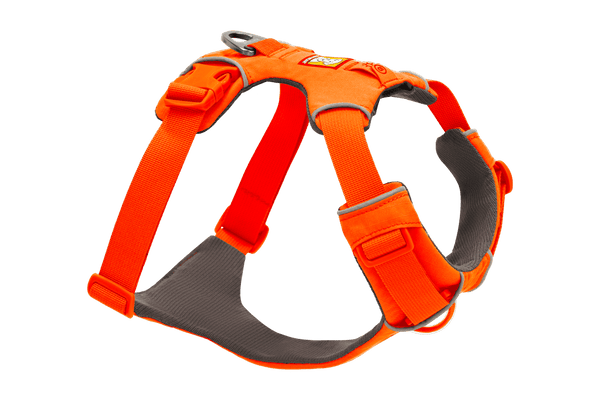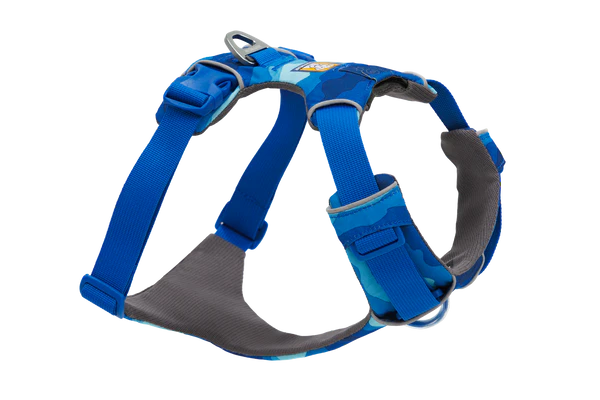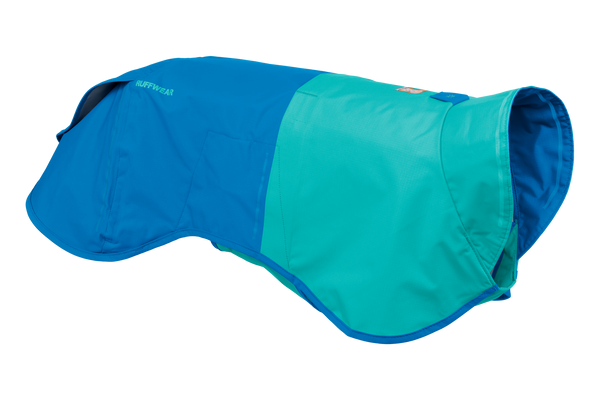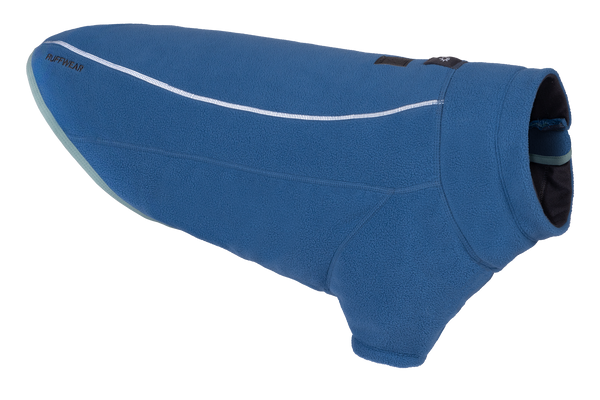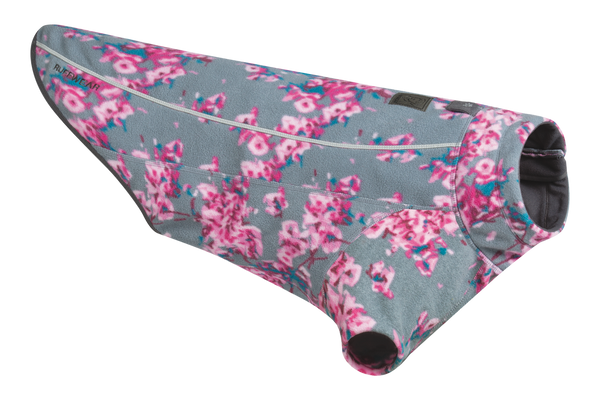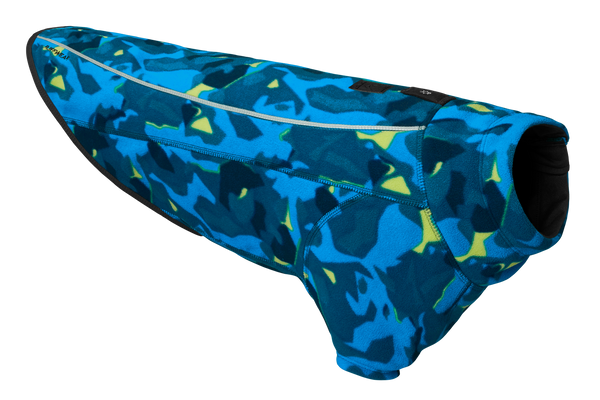Go, Hugo, Go! A Journey From Guide Dog to Detection Dog
Abby Smith had dreamed of working as a conservation dog handler since childhood. Her German Shepherd, Hugo, started out on a different path. As a puppy, he trained to be a guide dog – with Abby as his puppy raiser. When a health test led to Hugo’s release from the program, Abby adopted him and started working as a handler for Rogue Detection Teams. Hugo joined her for the ultimate experiment: can a former guide dog-trained pup swing it in the detection dog world?
As soon as Abby says, “Let’s go find it,” Hugo’s gait shifts. Seconds ago, he was his laid-back self: a fluff-covered social butterfly. But with those four words, he transforms into “wolf-mode” – narrowed eyes, hunched shoulders, nose glued to the ground.

Hugo is a conservation detection dog for Rogue Detection Teams. He and his handler, Abby, are currently on assignment for Bat Conservation International at an Iowa wind farm. The duo tracks bat remains, collecting data on bat mortality rates from wind turbines.
Donning his Front Range® Harness, Hugo trots through the cornfield, sniffing his way through a mowed plot at the base of a turbine. Hugo’s ears perk. He catches a whiff of the “odor cone.”
Abby’s pulse quickens. “It’s like fishing where you get a tug on the line and you’re thinking, what’s it going to be? You see your dog’s nose ‘reeling it in.’ It’s really exciting.”
Hugo lays down, his nose points to the small remains of a bat between his front paws.
Abby cheers, “Yay, Hugo!” He beams up at her with his signature smile. Abby breaks into a Bye Bye Birdie song, one of Hugo’s favorite rewards for a job well-done.
“Now my life is Hugo, I will go where you go. With a boy like Hugo, how can I be blue?”
Hugo jumps up and trots around her, tip-tapping his paws in his own dance. As Abby pulls out a ball, Hugo’s pupils dilate. His tail swooshes at turbo speed. Wolf-mode complete; time for play-mode.

The days are long – wake up at 3 am, start at sunrise, and walk for miles without shade in the heat. A handler’s enthusiasm and use of rewarding play keeps the dogs motivated.
Lucky for Abby, she’s never short on enthusiasm for the job. At the top of her resume, she wrote “enthusiasm enthusiast” as her personal brand. You could say that’s Hugo’s brand, too – after a day’s work, he wants to keep playing “find it” in his free time.

Now, Abby sticks a flag by the bat, snaps a photo, logs it in an app, and texts the folks at Bat Conservation International with, “Hugo found bat remains!”
How It All Began
Abby always knew she wanted to work as a conservation detection dog handler: “At some point in my childhood, I read an article about my now-boss’s detection dogs, Alli and Gator, who were trained to sniff out wildlife data. I was enthralled and continued to follow the world of conservation dogs since then. My brother and I even named our toy dinosaurs Alli and Gator.”
But unlike Abby’s almost-destined path to work for Rogue Detection Teams, Hugo started out on a very different path – one to become a guide dog. Abby was his puppy raiser for Guiding Eyes for the Blind before landing her job at Rogue Detection Teams.

He had potential – loyal, smart, and eager to please – but the results of a health exam took him out of the running. His hips and joints weren’t suited to withstand long hours on concrete, a staple of guide dog life (fortunately, the natural terrain he now treks as a wildlife detection dog is a healthy fit). The program released him, and Abby had the opportunity to adopt him back.
It was a no-brainer for her. Still, Abby shares how bittersweet it is to adopt a dog that you’ve trained for a different future,
“It seems diametrically opposed, your deep desire for them to be a guide dog and your deep love for them. But I’ve learned they are two sides of the same coin. You want them to be successful because you love them. That list of people waiting for their guide dogs is really, really long. And that’s the whole reason I do this, so there’s one less person on the list. So I’m always going to save a part of my heart for that person who would have had him on a different timeline.”
Hired as a Family
On January 1, 2020, shortly after Abby adopted Hugo, she sent in her resume to work for Rogue Detection Teams. To her, it felt akin to trying to get on Broadway. But she got the job – and not only did she get it, they hired her then fiance (now husband) and Hugo, too.

Rogue Detection Teams had never hired someone’s companion dog before. Typically, they hire dogs who’ve had trouble finding homes – ones with high energy and a relentless need to be outside. Hiring Hugo was an experiment.
As his puppy raiser, Abby had trained Hugo from a shy, sensitive puppy to a confident, well-adjusted young dog. Still, she wondered, would my sweet, mellow dog be able to keep up with energetic Rogue dogs?
The answer was yes – and then some.
Watching Hugo in his new job, Abby soon saw that the skills he’d learned in guide dog training transferred to detection dog work.
Abby designed Hugo’s puppyhood around introducing him to diverse environments. Guide dogs need to remain calm in any setting, despite distractions. Abby taught Hugo emotional regulation skills while exposing him to loud rivers, busy streets, and vast, open fields – not unlike the sprawling cornfields he now works in as a detection dog.

Now, Hugo adapts quickly to wherever Rogue Detection Teams takes them – immediately snapping into focus mode.
The socialization Hugo received early on helps him adapt to different handlers. On this assignment, each handler switches dogs between each plot. As a young puppy, this would not have worked for Hugo.
Abby says he was a “little velcro dog,” crying anytime she left his side. She helped him through it: “There was an office building by my apartment, and I would wait outside and ask people to hold my puppy, because he needed that. And it paid off, because now he will work for anyone.”
And Abby really means anyone. Last Easter, Hugo “went to work” helping Abby’s 5-year-old cousin find Easter eggs. Hugo’s social skills also landed him a gig as Rogue Detection Teams’ Ambassador Dog on school visits.

Abby was surprised that Hugo’s intelligent disobedience – a classic guide dog skill – kicked in during detection work. Intelligent disobedience is when a guide dog needs to override their handler’s commands to keep them safe, like refusing to walk into oncoming traffic.
This popped up when Abby attempted to train Hugo to sit as a signal for when he detected a target, like bat remains. Hugo refused, lying down instead. Abby tried again and again – no luck.
Then, it struck her. He was intentionally choosing a better signal. One that was more specific and clearer for her to see – by lying down, he framed the target with his paws and pointed to it with his nose. No matter how tiny the fragment of remains was, she couldn’t miss it.

There’s no question Hugo is cut out for the detection dog life. And Abby couldn’t be prouder: “The relationship I have with Hugo yields tangible, real world results. I take this love I have for my dog and we go out there and do something that matters.”
Inspired?
Abby encourages anyone curious about guide dog puppy raising to give it a try, “The tagline is, ‘Raise a puppy, change a life.’ But you change your life, too.” Hooked on detection dogs? Learn how Rogue Detection Teams makes conservation magic happen each day.
And don’t forget to track Abby and Hugo while they track their targets by following them at @science_sniffers. Go find it!
